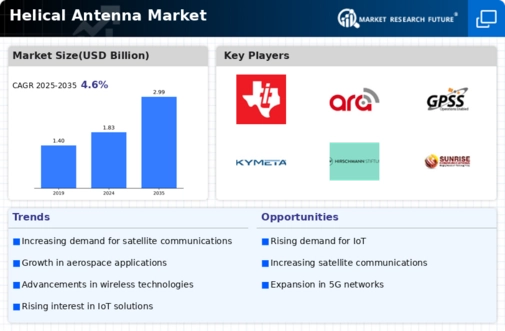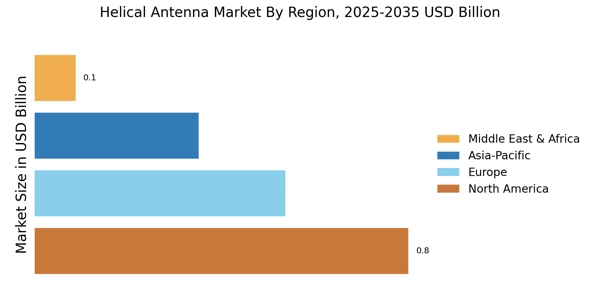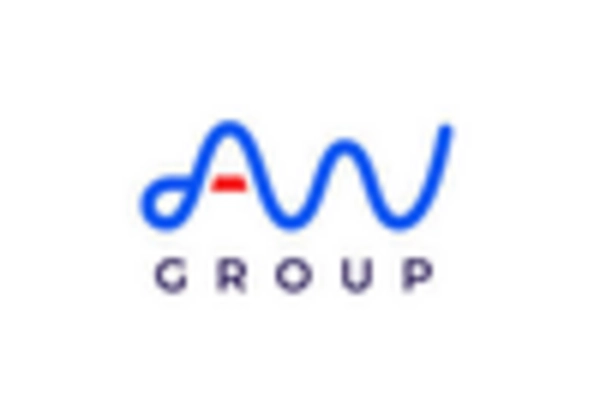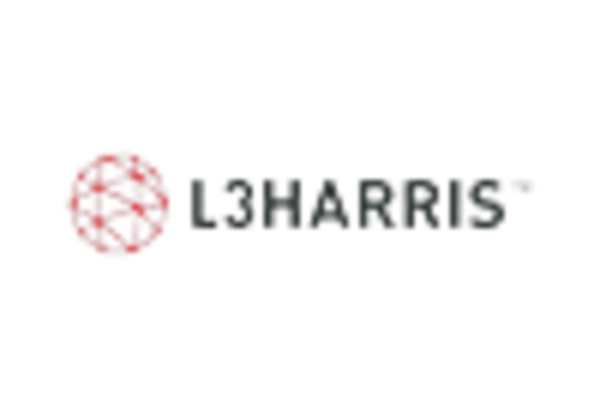Growth in Consumer Electronics Sector
The helical antenna market is witnessing a notable increase in demand driven by the growth in the consumer electronics sector. As devices such as smartphones, tablets, and smart home appliances become more prevalent, the need for efficient communication solutions is paramount. Helical antennas are increasingly being integrated into these devices due to their compact size and superior performance characteristics. Market data suggests that the consumer electronics sector is expected to grow at a CAGR of approximately 9% over the next few years, which will likely boost the demand for helical antennas. This growth reflects the ongoing trend towards connectivity and the integration of advanced communication technologies in everyday consumer products, positioning helical antennas as a key component in the evolution of consumer electronics.
Rising Adoption in Aerospace and Defense
The helical antenna market is experiencing a notable surge in demand due to its critical applications in aerospace and defense sectors. These antennas are favored for their ability to provide reliable communication in challenging environments, such as during flight operations and military missions. The increasing investments in defense technologies and the modernization of military communication systems are driving this trend. According to recent data, the aerospace and defense sector is projected to account for a significant share of the helical antenna market, with a compound annual growth rate (CAGR) of approximately 6% over the next five years. This growth is indicative of the sector's reliance on advanced communication technologies, which further solidifies the helical antenna's role in ensuring secure and efficient operations.
Expansion of Wireless Communication Networks
The helical antenna market is poised for growth as the expansion of wireless communication networks continues to accelerate. With the increasing demand for high-speed data transmission and connectivity, helical antennas are being integrated into various communication systems, including 5G networks. These antennas are known for their wide bandwidth and circular polarization, making them suitable for diverse applications such as mobile communications and satellite links. Market data suggests that the wireless communication sector is expected to witness a CAGR of around 8% in the coming years, which will likely enhance the demand for helical antennas. This trend reflects the industry's shift towards more efficient and reliable communication solutions, positioning helical antennas as a vital component in the evolving landscape of wireless technologies.
Technological Advancements in Antenna Design
The helical antenna market is benefiting from ongoing technological advancements in antenna design and manufacturing processes. Innovations such as computer-aided design (CAD) and simulation tools have enabled engineers to optimize antenna performance, leading to improved efficiency and reduced size. These advancements are particularly relevant in applications where space is limited, such as in mobile devices and compact communication systems. The market is witnessing a trend towards the development of multi-band and wideband helical antennas, which cater to the growing need for versatile communication solutions. As a result, the helical antenna market is projected to grow at a CAGR of approximately 7% over the next few years, driven by the demand for cutting-edge antenna technologies that meet the requirements of modern communication systems.
Increasing Use in Remote Sensing Applications
The helical antenna market is experiencing growth due to the increasing use of antennas in remote sensing applications. These antennas are essential for collecting data from satellites and other remote platforms, providing critical information for environmental monitoring, disaster management, and agricultural assessments. The demand for accurate and reliable data in these fields is driving the adoption of helical antennas, which are known for their ability to maintain signal integrity over long distances. Market analysis indicates that the remote sensing sector is likely to expand at a CAGR of around 5% in the coming years, further enhancing the relevance of helical antennas in various scientific and commercial applications. This trend underscores the importance of helical antennas in supporting data-driven decision-making processes across multiple industries.

















Leave a Comment